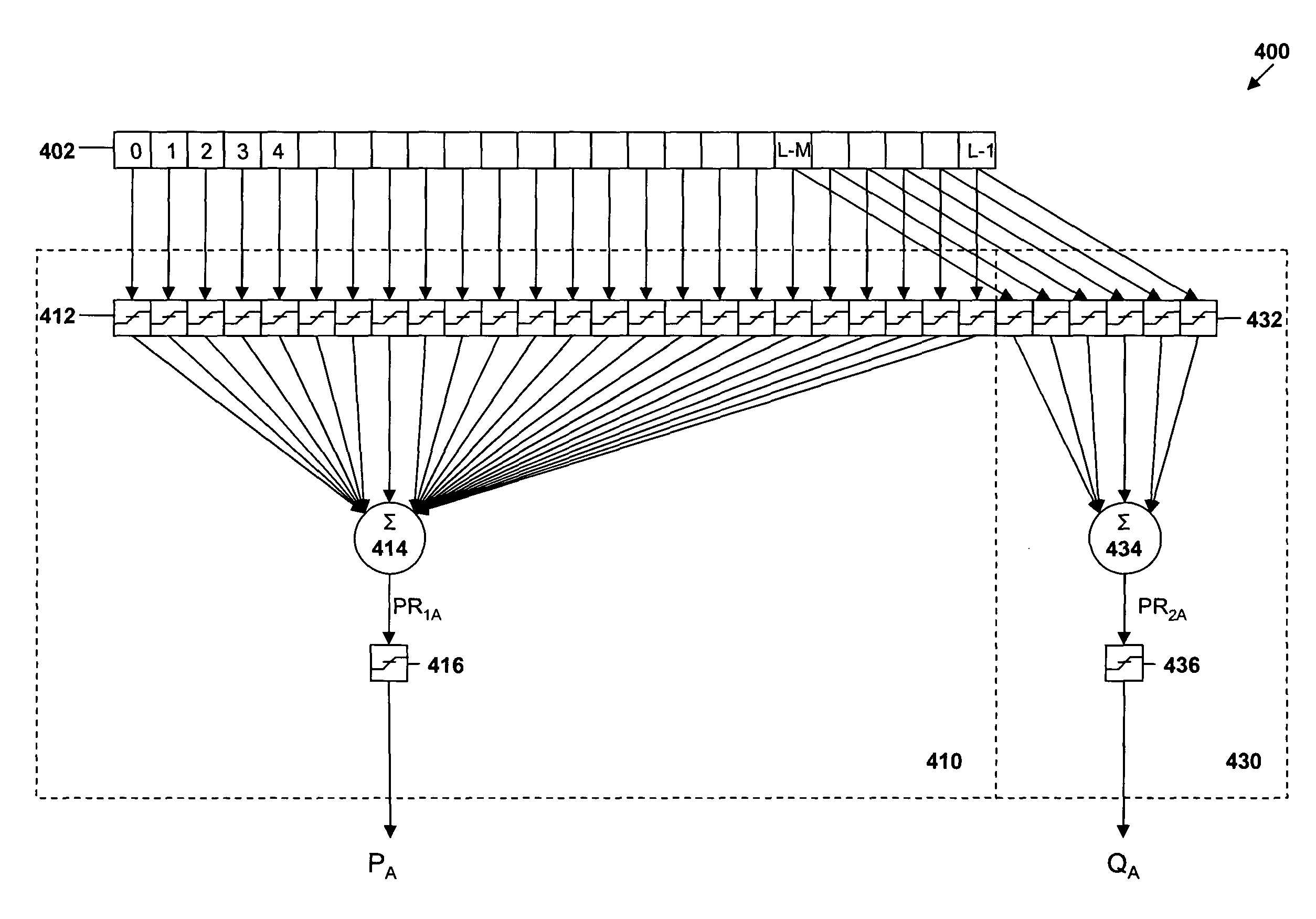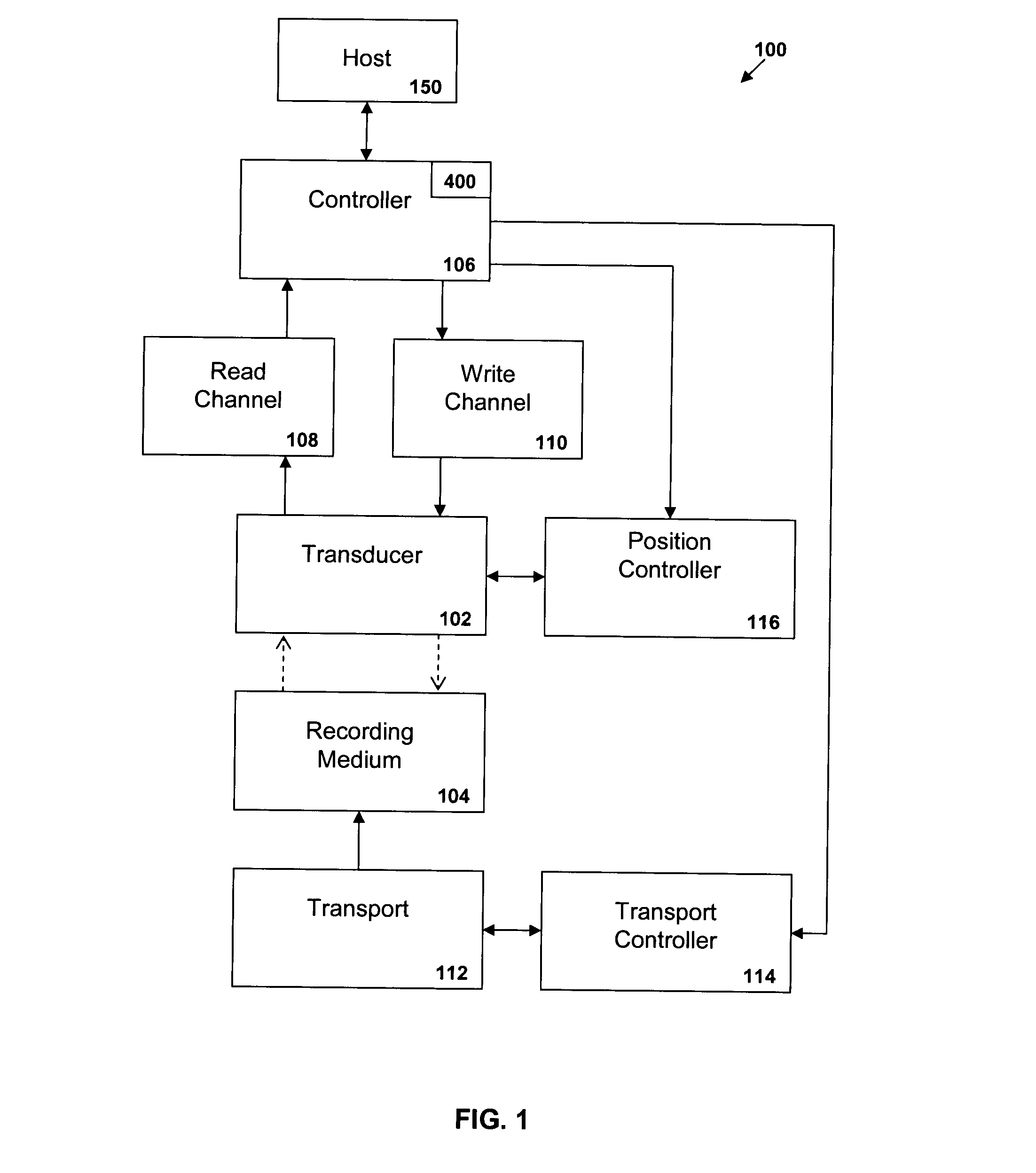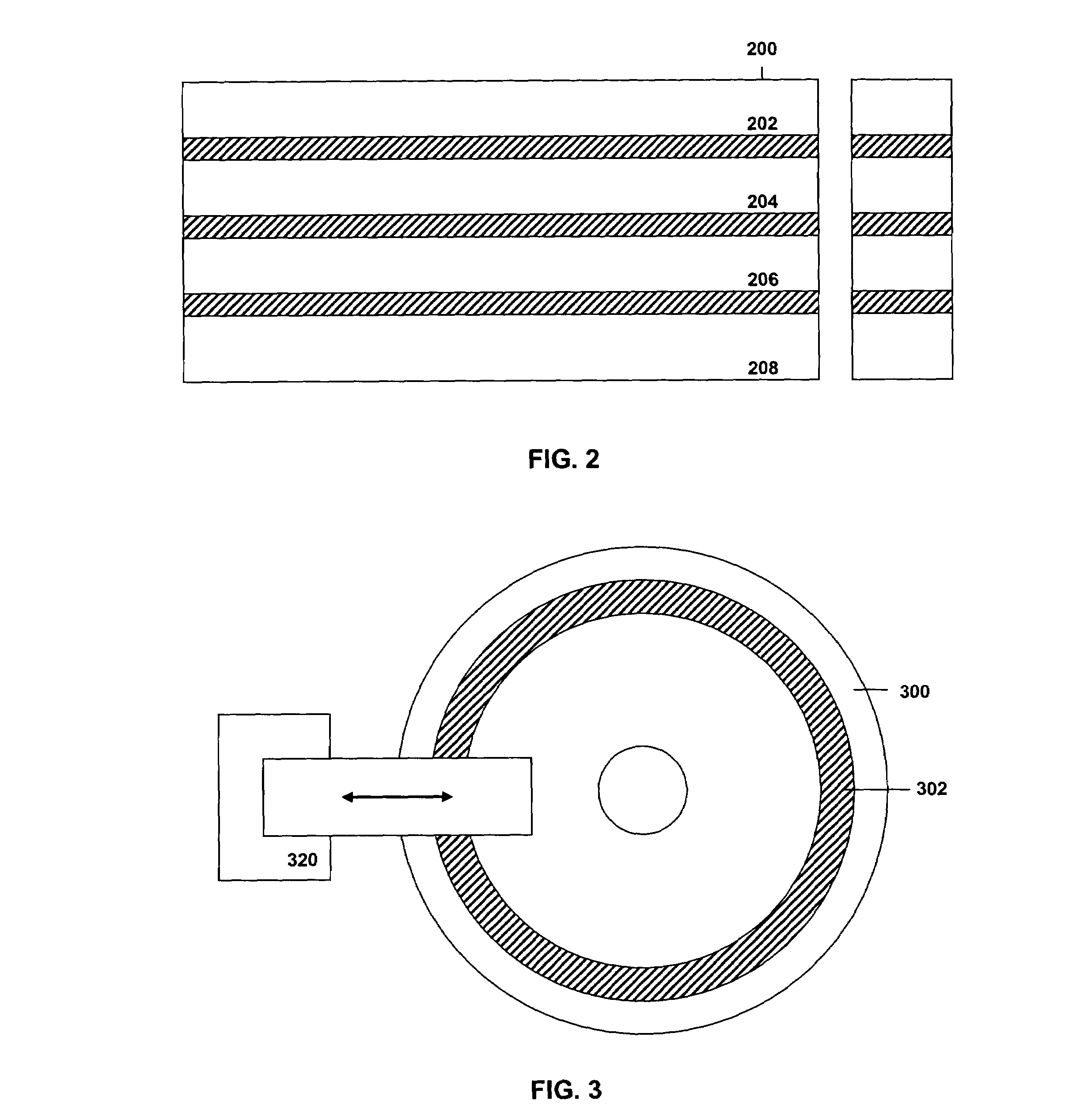Identifying systematic errors in a data recording system
a data recording system and systematic error technology, applied in the field of systematic error identification in the data recording system, can solve problems such as system problems, loss of tape capacity, and system errors of all types
- Summary
- Abstract
- Description
- Claims
- Application Information
AI Technical Summary
Benefits of technology
Problems solved by technology
Method used
Image
Examples
Embodiment Construction
[0029]The present invention differentiates between systematic and non-systematic (transient) conditions by observing a figure of merit over a series of many observation events. Each event is classified and, based on the respective classifications, a decision may be made as to the nature of a condition. In a data storage recording environment, the particular the figure of merit used is the number of data segments that must be re-written (due to errors) to a recording medium in order to assure that an entire data set is correctly written. A larger number of re-written segments is indicative of a significant error condition. The present invention is able to determine whether such an error condition is a systematic one (to which remedial action may be applied) or a non-systematic one (to which the application of remedial action is likely to be a wasted effort).
[0030]After each data set is completely and correctly written, the number of re-written segments for the data set is reported as...
PUM
| Property | Measurement | Unit |
|---|---|---|
| threshold | aaaaa | aaaaa |
| time | aaaaa | aaaaa |
| transmission | aaaaa | aaaaa |
Abstract
Description
Claims
Application Information
 Login to View More
Login to View More - R&D
- Intellectual Property
- Life Sciences
- Materials
- Tech Scout
- Unparalleled Data Quality
- Higher Quality Content
- 60% Fewer Hallucinations
Browse by: Latest US Patents, China's latest patents, Technical Efficacy Thesaurus, Application Domain, Technology Topic, Popular Technical Reports.
© 2025 PatSnap. All rights reserved.Legal|Privacy policy|Modern Slavery Act Transparency Statement|Sitemap|About US| Contact US: help@patsnap.com



